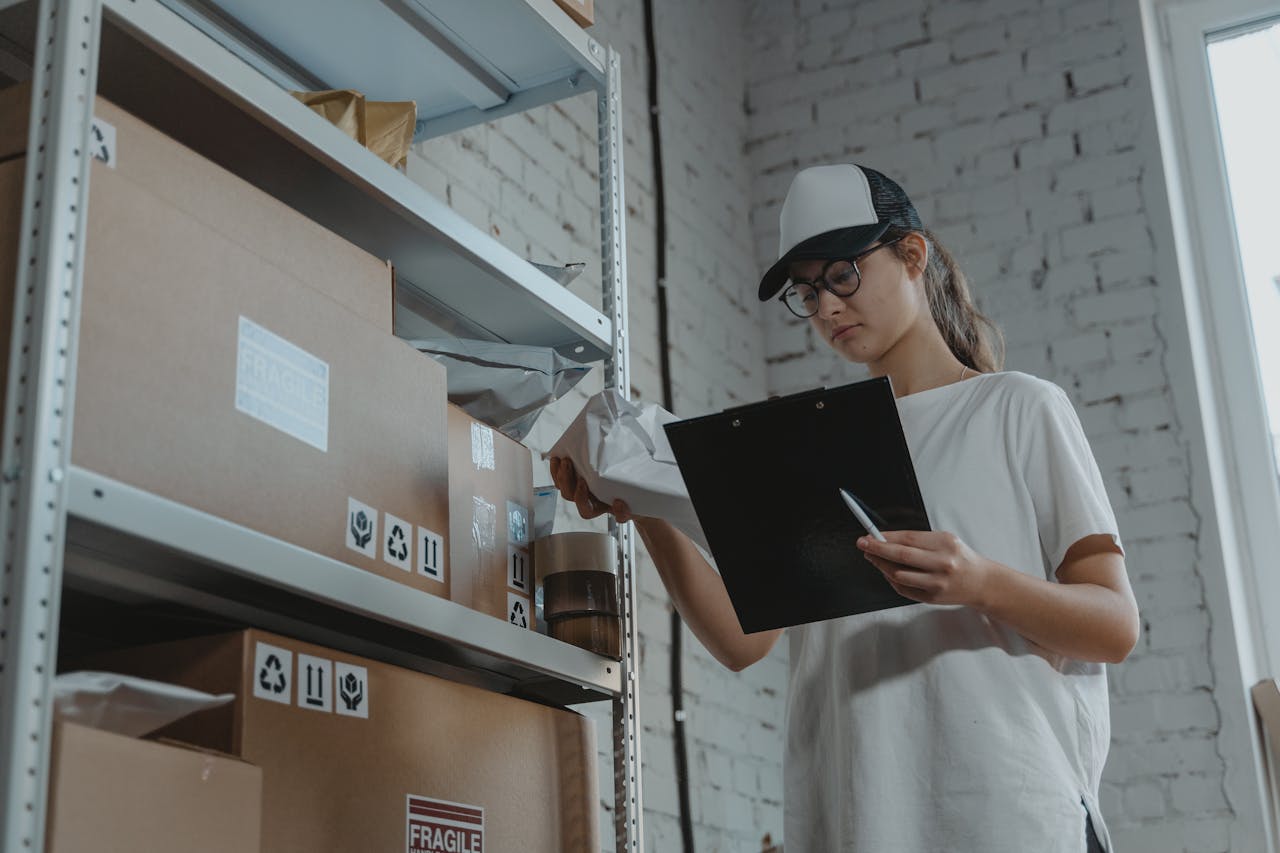How Favouritetable's Restaurant Management Software Streamlines Daily Operations

Strong 8k brings an ultra-HD IPTV experience to your living room and your pocket.
The fast-paced nature of the restaurant industry demands seamless coordination, efficiency, and constant attention to detail. Restaurant owners and managers have a multitude of tasks to juggle, from managing staff schedules and inventory to ensuring that customers receive excellent service. In this environment, small errors can snowball, leading to poor customer experiences, increased costs, and operational inefficiencies. However, with the advent of restaurant management software, many of these challenges can be significantly alleviated, leading to a smoother workflow, fewer mistakes, and a more streamlined operation.
In this article, we will explore how restaurant management software can optimize daily operations, improve workflow, reduce errors, and save valuable time for both restaurant staff and managers. We'll break down the various aspects of restaurant management that benefit from software systems, providing a comprehensive view of how technology is transforming the restaurant industry.
1. Centralized Management and Real-Time Data Access
One of the most significant advantages of restaurant management software is the ability to centralize operations. Traditionally, restaurant managers had to rely on spreadsheets, paper logs, and verbal communication to keep track of key aspects like inventory, orders, and customer feedback. These methods were not only time-consuming but also prone to human error.
With a digital platform, managers can access real-time data on multiple aspects of the restaurant in one place. From sales and inventory to labor costs and customer reviews, everything is available at a glance. This centralized system allows managers to make informed decisions quickly, adjust operations in real time, and spot potential issues before they become significant problems.
For instance, if inventory levels are running low on a popular item, the system can automatically alert the manager. Similarly, if a staff member is running late or unavailable, the software can help schedule replacements without disrupting service. The integration of all departments into one system allows for greater visibility, coordination, and efficiency.
2. Streamlined Order Management
Efficient order management is crucial to the success of any restaurant. Restaurant management software enhances this aspect by simplifying the ordering process and reducing the chances of miscommunication between front-of-house and kitchen staff.
With digital order entry, servers can input orders directly into a tablet or POS system. These orders are instantly transmitted to the kitchen, ensuring that there are no delays in processing. This direct communication between the front and back of house eliminates the need for paper tickets, reduces the chance of incorrect orders, and ensures that the kitchen team receives clear, legible instructions. Additionally, kitchen staff can mark items as completed or request clarification, which allows the front-of-house team to update customers in real time.
In fast-paced environments, every second counts, and streamlining the order management process can drastically improve efficiency. With fewer errors in order-taking and processing, customers receive their meals faster, and the restaurant can serve more guests in less time.
3. Inventory Management and Waste Reduction
Inventory management can be a complex task, especially in a busy restaurant environment. It requires constant monitoring of stock levels, predicting future needs, and avoiding overstocking or running out of essential items. Traditional manual inventory tracking is time-consuming, prone to errors, and often leaves restaurants with excess or insufficient inventory.
Restaurant management software simplifies inventory tracking by automating the process. Many systems feature real-time inventory updates, so when an item is used or sold, the system automatically adjusts stock levels. Additionally, software platforms can generate alerts when stock is running low, enabling restaurant managers to reorder supplies before they run out.
This level of automation also helps prevent over-ordering, which can lead to food waste and unnecessary storage costs. By accurately predicting inventory needs based on historical sales data, restaurant management software ensures that restaurants maintain optimal stock levels, reduce waste, and lower food costs. The system can also track the shelf life of perishable items, alerting staff when products are nearing expiration, further minimizing waste.
4. Employee Scheduling and Labor Cost Control
Managing employee schedules is often a challenging and time-consuming task for restaurant managers. In addition to keeping track of employee availability and preferences, managers must ensure that shifts are adequately staffed to meet customer demand while keeping labor costs in check. This balance is essential to maximizing profitability and providing excellent service.
Restaurant management software makes scheduling more efficient by automating many of the processes involved. With a scheduling system integrated into the software, managers can easily view staffing needs based on historical sales data, forecasted busy periods, and employee availability. This allows them to create schedules that meet demand without overstaffing or understaffing.
The software can also enable employees to request time off or swap shifts directly through the platform, reducing the need for back-and-forth communication. Managers can approve these requests with a few clicks, saving time and minimizing errors in scheduling. In addition, real-time labor tracking allows managers to monitor labor costs throughout the day, helping them stay within budget and make adjustments if necessary.
By automating scheduling and streamlining communication between staff and management, restaurant management software reduces the administrative burden on managers and helps maintain a well-staffed, efficient operation.
5. Customer Relationship Management (CRM)
In an industry where customer satisfaction is paramount, building and maintaining strong customer relationships is essential. Restaurant management software can assist in this area by providing robust CRM tools that help restaurants personalize their service and create memorable experiences for their guests.
Many restaurant management systems include features such as customer profiles, which store information about previous orders, dietary preferences, and special requests. By tracking this data, restaurant staff can offer more personalized service, anticipate customer needs, and even offer loyalty rewards or promotions to repeat customers.
For instance, if a regular customer orders a specific dish each time they visit, the software can flag this and allow the server to recommend complementary items or even suggest an upgrade based on the customer’s preferences. This not only enhances the customer experience but also increases the likelihood of higher sales and repeat visits.
Additionally, restaurant management software can gather customer feedback through surveys, reviews, or direct communication channels. This information allows managers to assess the quality of service and make improvements where necessary, further enhancing customer satisfaction and loyalty.
6. Reporting and Analytics for Data-Driven Decision Making
A significant benefit of using restaurant management software is the ability to generate comprehensive reports and analytics. Traditional methods of tracking performance, such as spreadsheets and manual calculations, are time-consuming and may not provide real-time insights. Software platforms, on the other hand, can produce detailed reports on sales, inventory, labor costs, and customer behavior in just a few clicks.
This data-driven approach enables restaurant owners and managers to make informed decisions based on real, up-to-date information. For example, managers can analyze sales data to identify popular menu items, spot trends, and adjust pricing or inventory levels accordingly. They can also assess labor costs to determine if staffing levels align with revenue generation and adjust schedules or hiring practices as needed.
By providing these insights, restaurant management software helps managers optimize operations, reduce costs, and maximize profitability. The ability to monitor performance metrics in real-time allows managers to quickly respond to challenges, improve efficiency, and ensure that the restaurant remains competitive in the market.
7. Improved Communication and Collaboration
Communication is the backbone of any successful restaurant operation. Without effective communication between staff, managers, and suppliers, the restaurant is likely to experience inefficiencies, errors, and poor customer service. Restaurant management software facilitates better communication by providing a centralized platform where all team members can access critical information.
For example, managers can send out important updates, schedule changes, or special instructions to staff through the software, ensuring that everyone is on the same page. This reduces the need for verbal communication and ensures that important messages aren’t missed or misinterpreted. Similarly, communication with suppliers is streamlined, as managers can use the software to place orders, track deliveries, and manage invoices without needing to rely on phone calls or emails.
8. Enhanced Compliance and Safety
Ensuring compliance with food safety regulations and labor laws is critical for any restaurant. Restaurant management software helps maintain compliance by automating processes related to health and safety, employee breaks, and working hours. For example, many software platforms have built-in features to track food safety protocols, such as monitoring temperature levels for refrigerated items or tracking cleaning schedules.
Additionally, labor laws and regulations can vary from one region to another, and managing compliance manually can be a challenge. Software systems can track employee hours, monitor overtime, and ensure that schedules adhere to local labor laws, reducing the risk of costly fines or legal issues.
Conclusion
The use of restaurant management software has revolutionized the way restaurants operate, offering significant improvements in efficiency, accuracy, and overall performance. By centralizing data, streamlining communication, and automating time-consuming tasks, restaurant management software enables owners, managers, and staff to focus on providing excellent service to their customers.
From order management and inventory control to employee scheduling and customer relationship management, software platforms offer a comprehensive solution to many of the challenges faced by the restaurant industry. By reducing errors, saving time, and providing valuable insights, these systems empower restaurant owners and managers to make data-driven decisions that lead to increased profitability and enhanced customer satisfaction.
As the restaurant industry continues to evolve, adopting a robust restaurant management software system is no longer just a luxury but a necessity for staying competitive and thriving in an increasingly digital world.
Note: IndiBlogHub features both user-submitted and editorial content. We do not verify third-party contributions. Read our Disclaimer and Privacy Policyfor details.



